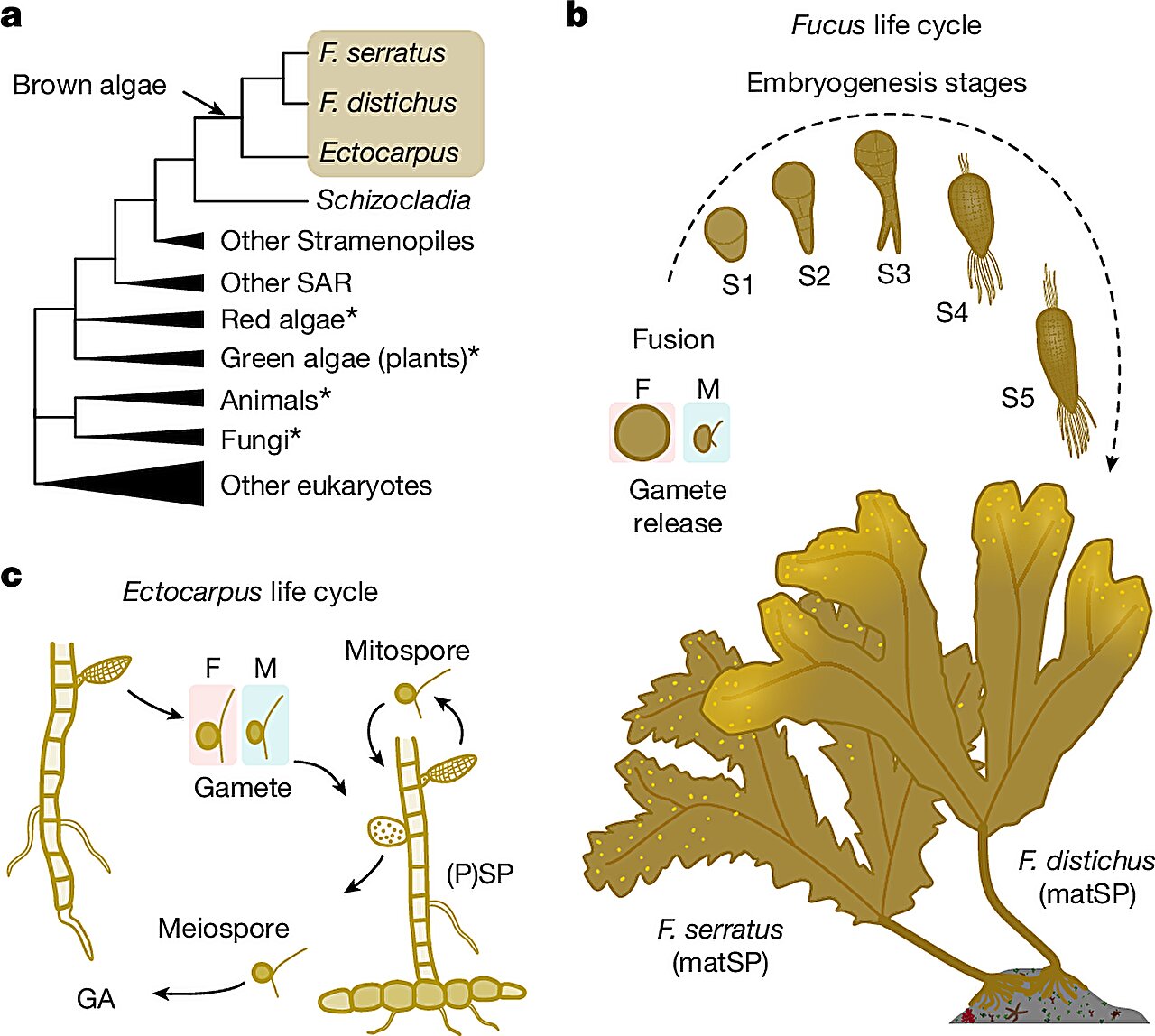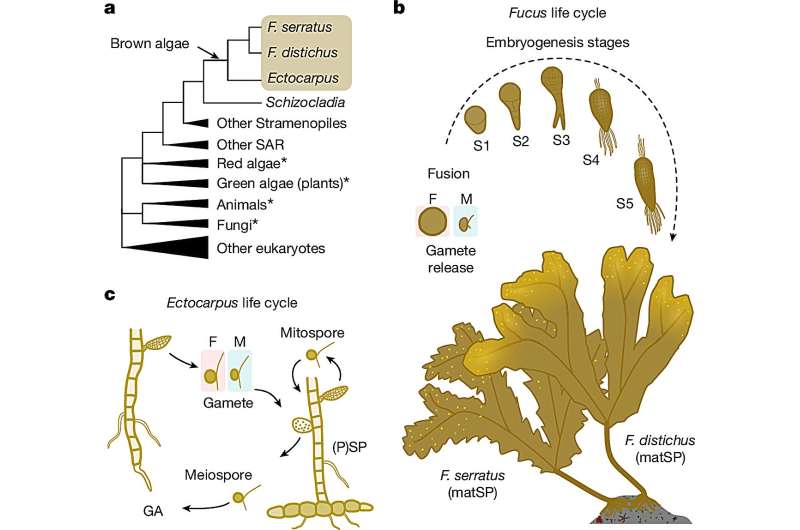

Researchers at the Max Planck Institute for Biology, Germany, have discovered a conserved developmental pattern known as the hourglass model in brown algae, providing more evidence that the phenomenon may be a universal feature of complex multicellular organisms.
Complex multicellularity evolved independently in various eukaryotic lineages, including animals, plants, fungi, and algae. This evolutionary leap of going from one to many requires organisms to adopt intricate developmental processes for coordinating cell differentiation of all the new specialized cell tissues.
According to the hourglass model of embryonic development, early and late stages of development exhibit morphological and molecular diversity, while a mid-embryonic phase remains highly conserved across species. Within the conserved phase are the steps critical for establishing the basic body plan of the organism.
In a study titled “A transcriptomic hourglass in brown algae,” published in Nature, the research team investigated whether the hourglass pattern observed in animals, plants, and fungi also exists in brown algae. This group evolved multicellularity independently from the rest approximately 450 million years ago.
The researchers chose brown algae seaweed because of its independent origin and incredible diversity. They are dominant lifeforms in many coastal regions and represent the third-most morphologically complex lineage on Earth, comparable to plants in cell size, tissue types, and developmental complexity.
Several brown algal species with varying levels of morphological complexity, including Fucus serratus, Fucus distichus, and Ectocarpus sp., as well as kelp species Laminaria digitata and Saccorhiza polyschides, were included in the analysis. Researchers used RNA sequencing to examine gene expression across different developmental stages.
More morphologically complex brown algae, such as Fucus serratus and Fucus distichus, had a clear hourglass pattern during embryogenesis. The pattern was characterized by significant changes in gene expression at the early and late stages, with a highly conserved phase in the middle.
Transcriptome age index, a method that estimates the evolutionary age of genes expressed during development, was used to quantify the conservation and divergence of gene expression patterns throughout the life cycles of the studied species. In the early and late stages of development, greater diversity in gene expression was observed. These stages show higher transcriptomic divergence, with more recently evolved genes being expressed.
During the mid-embryonic phase, brown algae express more evolutionarily older genes. This phase was found to be highly conserved across different species.
Morphologically simpler brown algae like Ectocarpus and the gametophytes of Laminaria digitata and Saccorhiza polyschides do not exhibit this hourglass-shaped gene expression pattern. Instead, their development involves a smooth transition from unicellular to multicellular stages without distinct phases, limiting their ability to produce more differentiated cell types.
Extending the hourglass model to brown algae broadens our understanding of the developmental framework and further illustrates how fundamental a process it is to forming complex multicellularity across eukaryotic life.
More information:
Jaruwatana Sodai Lotharukpong et al, A transcriptomic hourglass in brown algae, Nature (2024). DOI: 10.1038/s41586-024-08059-8
Diethard Tautz, Brown-algae development joins the hourglass club, Nature (2024). DOI: 10.1038/d41586-024-03316-2
© 2024 Science X Network
Citation:
Hourglass model of complex multicellularity found in brown algae (2024, October 25)
retrieved 25 October 2024
from https://phys.org/news/2024-10-hourglass-complex-multicellularity-brown-algae.html
This document is subject to copyright. Apart from any fair dealing for the purpose of private study or research, no
part may be reproduced without the written permission. The content is provided for information purposes only.